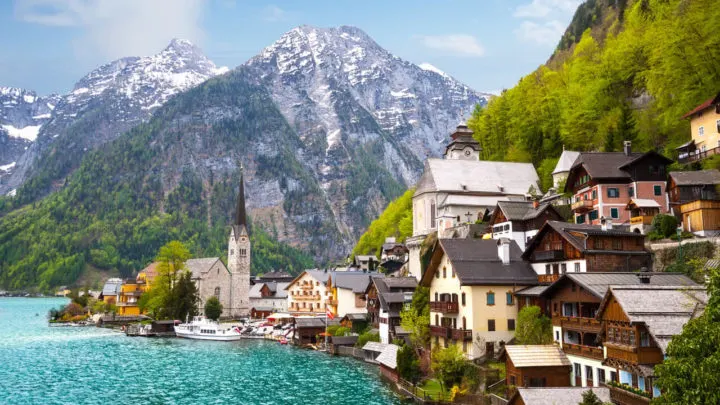I feel that far too many people skip Austria, or opt to just go to Vienna, but not for a good reason! Austria’s location makes it an easy destination to visit and with the mix of history, architecture, drinks, and cuisine in this country, you can easily spend plenty of time here and not get bored.
If you’re short on time, 5 days will take you to the top spots that most people want to visit. But if you can stretch your time out here, a week or 10 days in Austria will take you to the highlights more in-depth. This itinerary for Austria covers where to go, what to do, where to stay, and my recommendations as someone who has been to Austria multiple times. Enjoy!
Austria Fast Facts
Austria is a part of the EU (European Union) and has been since 1995. It’s a small country and is easy to travel to from the surrounding countries, which also makes day trips to or from Austria extremely easy as well!
- Currency: Euro (€)
- Languages: German, with many dialects, and English is widely spoken
- Capital: Vienna
- Population: 8.9 million
- Religion: Christianity is the majority
Recommended Austria Tours
Skip planning your trip yourself with these top-rated tours around the country.
- Sound of Music in 9 days
- Prague, Munich & Austria in 7 days
Austria Itinerary
I’ve laid out this itinerary so that you can choose one of the routes I recommend below or I give you what you can expect to do on a day-to-day basis so you can pick and choose which days suit you and your travel style best.
5 Days in Austria
- Vienna (2-3 days)
- Salzburg (1-2 days)
- Day trip to Hallstatt
7 Days in Austria
- Vienna (3 days)
- Salzburg (2 days)
- Day trip to Hallstatt
- Innsbruck (2 days)
10 Days in Austria
- Vienna (3 days)
- Wachau or day trip from Vienna to Bratislava, Slovakia
- Salzburg (2-3 days)
- Day trip to Hallstatt
- Innsbruck (2 days)
Breakdown of My Austria Trip Itinerary
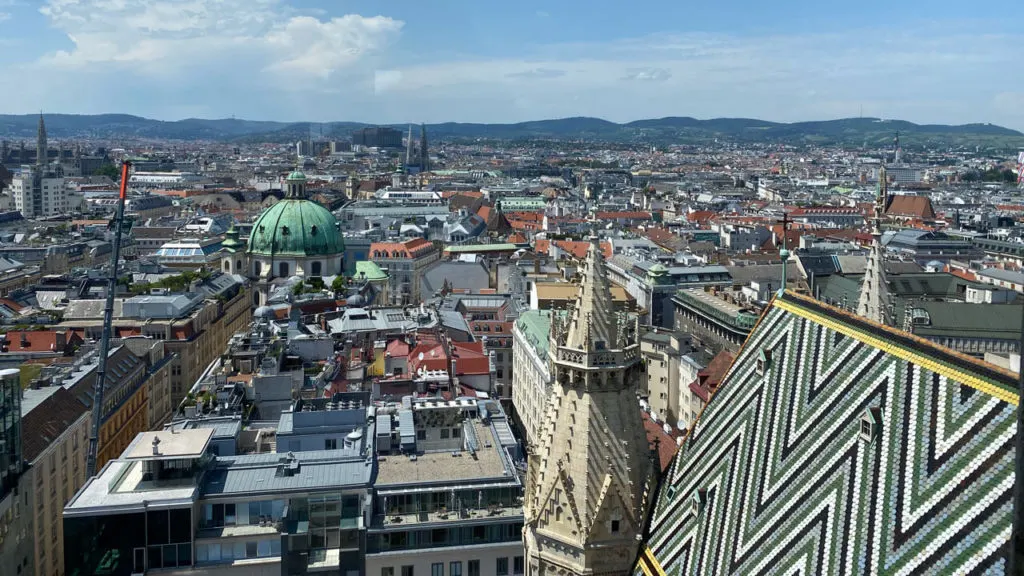
Vienna: 2-3 Days
Vienna is the largest city in Austria, and with so many notable places to visit in Vienna, and a number of day trips can be done from here so be sure to plan enough time! 2 days in the city can be done, but I recommend 3 days in Vienna so it’s not a rush. Because when in Vienna, do as the Viennese do and take your time, enjoy the cafes and culture.
DAY 1: Begin your trip to Austria where the royals did, in the old town. Spend the day roaming through the cobblestone streets and popping into cafes, lounging in parks, and visiting churches and museums. I recommend beginning the day with a walking tour to get your bearings (I personally did this tour and recommend it), tips for the rest of your time in Vienna, and to understand the history of this magnificent city and how it’s laid out.
Other highlights for day 1 I recommend are visiting St Stephen’s Cathedral and climbing the tower to the top for views over Vienna, having a slice of the famous sacher torte at Sacher Cafe, and visiting the Sisi Museum to see some of the Imperial Apartments in the Hofburg Palace.
DAY 2: Just a few kilometres outside of the city centre you’ll find Schönbrunn Palace, which is a highlight of Vienna. This yellow summer palace is where you can explore more ornately decorated rooms as well as the gardens, tea house, a zoo, and even an apple strudel show! You could easily spend a whole day here, but half a day will suffice too. In the afternoon some options are Belvedere Palace which is a museum that houses some of the most famous pieces by Klimt. Other options include indulging at the Naschmarkt, a local market, hitting up the rides and ferris wheel at Prater Park, or having some sweets at one of the famous cafes such as Demel or Cafe Central. In the evening, head to the opera to see inside the opera house and a show for only 10 euros!
DAY 3: All of the above is a lot to do in 2 days, so whatever you don’t get to, plan to do today. But some additional options are enjoying a cruise on the river, watching the Spanish Riding School practice or put on a show, visit one of the many, many other museums, catch a Mozart show in the beautiful Karlskirche, join a food tour, or do a day trip to Bratislava. You’ve got options.
Where to Stay in Vienna
Budget: Wombat’s City Hostel Vienna Naschmarkt
Modern, clean, and fun, Wombat’s hostels are a great option for all kinds of travellers. This Vienna hostel offers small to mid-size dorm rooms and private rooms with the option for a private bath in a great location that is walking distance to many attractions and within minutes of a subway stop.
Mid-Range: Hotel IMLAUER Wien
From this hotel you’ll be able to walk to most places in Vienna in 20 minutes and under, or a subway stop is within minutes of the hotel. It’s on a quiet street and is very spacious for a hotel in Europe. I’ve personally stayed here and recommend it.
Luxury: Hotel Sacher Wien
Luxury and opulence ooze out of this centrally located hotel that is apart of Viennese history. A stay here is truly a treat with the Vienna Opera House and pedestrian-only walking streets right at your doorstep.
Wachau: 1 Day
You have two options for visiting the Wachau Valley. It’s possible to do it as a day trip from Vienna, or spend a night in one of the towns along the 40km or so stretch of the area along the Danube. Some would prefer to do a day trip so it’s not a hassle to pack luggage and move it again. Since Wachau Valley is only about an hour from Vienna, it’s really not a long journey to travel back to Vienna and then onto Salzburg the next day, so it’s completely up to you!
If you opt to stay in Wachau, Melk and Krems are easily accessible by train which would make having baggage easy to deal with. These two points are perfect for if you’re doing a day trip on your own, arriving at one and departing from the other, if you choose not to do an organized day trip.
If doing it on your own, you can visit plenty on foot or by renting a bike. Winery hopping is an obvious choice, and the Melk Abby is a must-see as a highlight not only in Austria, but in all of Europe. Consider jumping onto a cruise too to take in the small towns from the water.
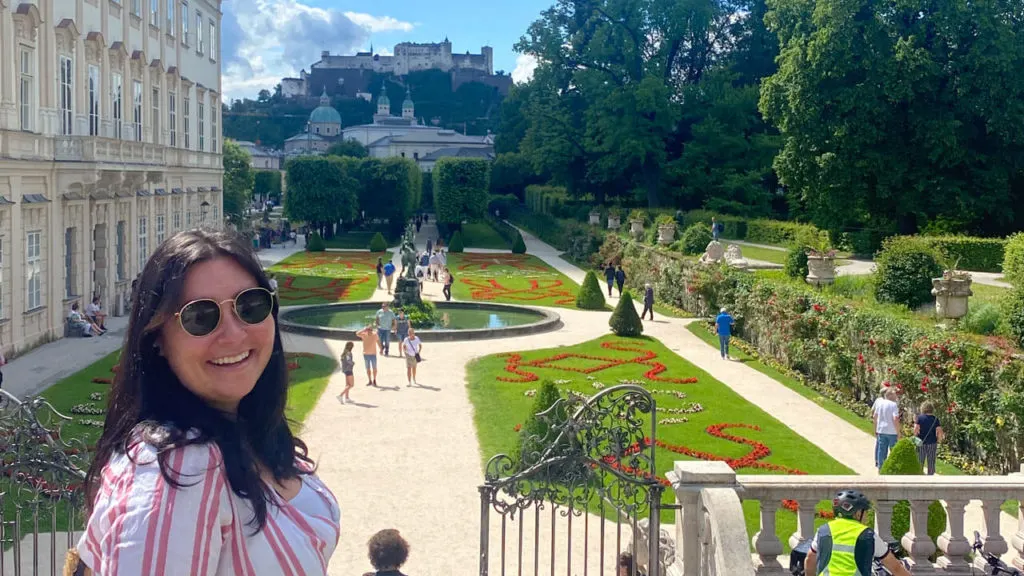
Salzburg: 1-2 Days
If you can only visit 2 places in Austria, make it Vienna and Salzburg! This small city is deserving of at least 2 days but if you can only fit in a day, it’s still absolutely worth visiting.
DAY 1: I always suggest a walking tour of European cities to begin anywhere because there are so many things you can miss just walking around yourself. This tour specifically was awesome. Afterward, head to the Salzburg Cathedral for 12:05 to watch and listen to the organs being played for 20 minutes in an intricate and grand church. After lunch, make your way up to the Hohensalzburg Fortress. But instead of going directly there, head to St. Erhard. You will find some stairs on your way there, take them and behind the church are great views of Salzburg and the mountains. From here you can walk back out to the stairs but don’t go down, stay left and you’ll find yourself at the fortress within a few minutes. Continue your way to the Museum der Moderne Salzburg (you’ll stay above the city so don’t go all the way down). There is a lovely walk connecting the 2 and ask for directions to avoid getting lost like I did! End your day with some Salzburger nockerl, a dessert famous in Salzburg.
DAY 2: You could do a Sound of Music tour which is widely popular or continue exploring the city. In the city there are still the main shopping streets to explore, Getreidegasse and Linzer Gasse, as well as the Mirabell Gardens and Palace. Museums such as the Christmas Museum and Mozart’s Birthplace are both right in the old town and cafes such as Cafe Konditorei Fürst (where you can find the original Mozart chocolate balls) and Cafe Bazar are top spots to treat yourself. A river cruise is a relaxing and informative way to learn more about the city too. A cruise can also bring you to Hellbrun Palace, yet another highlight of Salzburg that’s not too far from the city centre. This palace has a few tricks up its sleeve so consider yourself warned!
Where to Stay in Salzburg
Budget: The Keep Eco Rooms
An eco-friendly hostel with down to earth decor and modern amenities. The location of this hostel is amazing, within walking distance to the train station, minutes walking to Mirabell Palace, and less than 15 minutes to the old town. Small dorms and private rooms are available.
Mid-Range: Altstadt Hotel Stadtkrug
A stylish and centrally located hotel right on one of the main walking streets of the old town, here you’ll be able to roll out of bed in comfort and be at most of Salzburg’s main attractions or restaurants in 5-10 minutes on foot.
Luxury: Radisson Blu Hotel Altstadt
You’ll be hard-pressed to find a location better than this. Tucked away in the old town not only is everything literally at your doorstep, but you’ll also have the option of beautiful views of the river. Old world charm with a touch of modern make this hotel one to feel fabulous in.
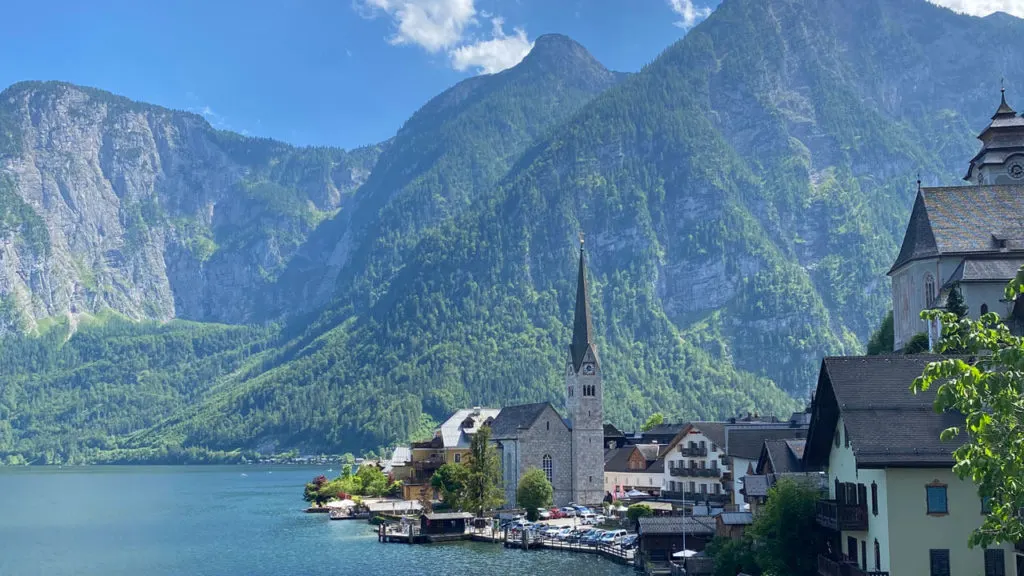
Hallstatt: 1 Day
Tours from Salzburg to Hallstatt are only half a day, which could work amazingly with your schedule. You’ll enjoy scenic drives in and out of Hallstatt and free time in the town to explore at your own pace and visit some of the highlights such as the view from the entrance to the salt mines and the Bone House. Hallstatt is not big so you don’t have to worry about not having enough time!
However, if you’re able to do the trip yourself, it’s best. Also in Hallstatt are ice caves and the Dachstein Mountains, both of which you can access via cable car and aren’t included in day trips. Renting a car is easiest, but taking the bus will stop close to the cable car. The train is also an option with a short ferry across the lake to town. If driving, get there early as parking fills up very fast and is limited.
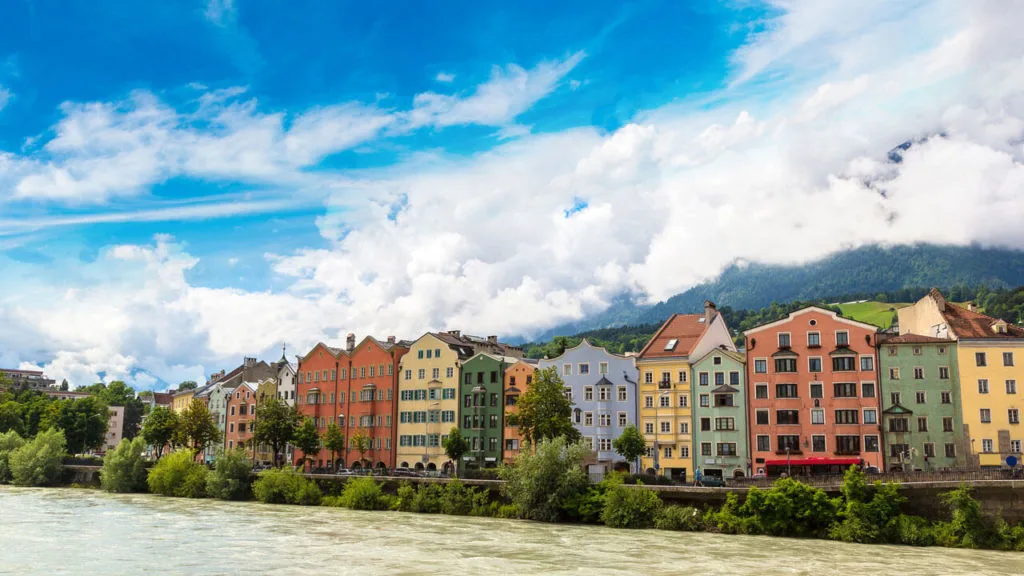
Innsbruck: 1-2 Days
I recommend spending at least a day and a half in Innsbruck as the time it takes you to get up to the mountains will eat away most of a day, and you’ll most likely want to spend more time up there once you are there! Innsbruck is quite small though, so it’s very easy to enjoy at a leisurely pace while still seeing it all. Check the weather and whichever day has the best weather opt to travel up the Nordkette Mountains.
DAY 1: If the weather permits, get yourself an Innsbruck card (this is the only city I found it to be well worth it) and hop on the cable car up to the Austrian Alps! First, from the city centre you’ll take the funicular to Hungerburgbahn. After a few stops (one of which is the Alpine Zoo) you’ll arrive at the last station, Hungerburg Station, and make a short walk across Hermann Buhl Platz, which already has amazing views, to the cable car station. There are 2 stops on the cable car and both are most definitely worth visiting. The first stop is Seegrube, where there is a restaurant and a number of trails leading off to hikes and climbing. There are easy trails here, you do not need to be a hiker to enjoy the easy 20-40 minute Trail of Perspectives.
Travel further up on a second cable car to Hafelekar to reach the top of Innsbruck after another short and easy hike. There is also a restaurant here where you can dine while watching the paragliders (or try paragliding yourself) float through the sky.
Come back down into town, grab some lunch and then make your way over to Bergisel Ski Jump which was built for the 1964 Olympics. After the walk across town and up a hill, you’ll be rewarded with even more views of Innsbruck, but from the other side of town. You can go up to the viewing platform at the top of the ski jump and there is a restaurant here too to treat yourself to a nice cool drink.
DAY 2: Spend most of the day in town today wandering the streets of the old town and seeing the main highlights. The Stradtturm is a tower that will take you to the top of the old town for yet more views! The Court Church (Hofkirche) is a museum and church that has the grandest and most elegant tomb I’ve ever seen. The Innsbruck Cathedral is of course worth a wander over to, and Hofburg Innsbruck is the imperial palace. Undoubtedly you will walk by the most famous attraction in Innsbruck, the Golden Roof, which is also a museum. And lastly, be sure to walk along the water and see the views of the colourful houses. All of these Innsbruck attractions are within walking distance of each other so you will have enough time to them all in less than a day.
But be sure to leave time for visiting the Swarovski Crystal Worlds Museum. Yes, it is quite touristy, but it is so well done and is something I highly recommend checking out. With an Innsbruck card, you will have a shuttle bus from the train station or in town to the museum as it’s just outside of town.
If time permits, you may want to join a Tyrolean evening of food and entertainment or find yourself some delicious local cuisine and a beer or Radler in a beer garden or while in view of the Golden Roof.
Where to Stay in Innsbruck
Budget: MEININGER Hotel Innsbruck Zentrum
Right by the old town, this part hostel, part hotel, is a fun and funky option for those who are looking for a more social atmosphere. Both small dorms and privates for a variety of group sizes are available.
Mid-Range: Hotel Neue Post
This hotel has a stellar location where the train station is within a 10-minute walk and you enter the old town as soon as you cross the street. Comfortable beds, easy, contactless check-in and breakfast on-site if you’d like make this mid-range option a top choice.
Luxury: Altstadthotel Weißes Kreuz
A luxurious room with a view of the Golden Roof? Yes, please! With amazing views, stellar decor, and a better-than-ever location, don’t pass up on the opportunity to stay here.
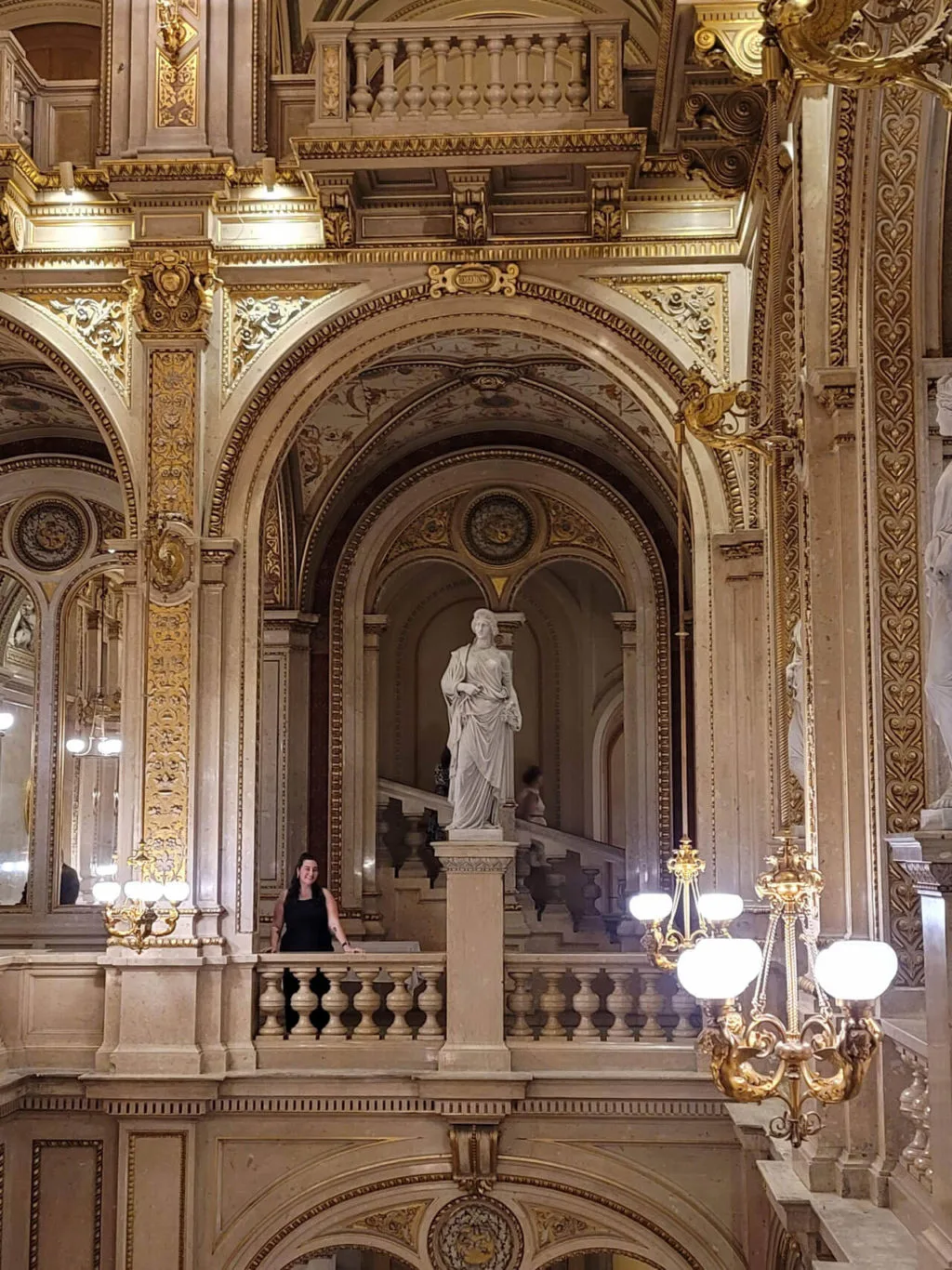
Best Time to Visit Austria
Austria can be visited any time of the year thanks to the number of activities, both indoors and outdoors that change or continue to stay open during the changing of seasons. From May until September is peak tourist season, the best weather, and perfect for sightseeing. It’s during this time that the streets of the cities will be bustling and hiking on the alpine trails will be free of snow.
Come in the shoulder seasons, April or October and you will be rewarded with fewer crowds, cooler weather, and discounted prices on flights and accommodation. Lastly, and not to be overlooked is late November and into December when Christmas markets in Austria light up the cities and towns.
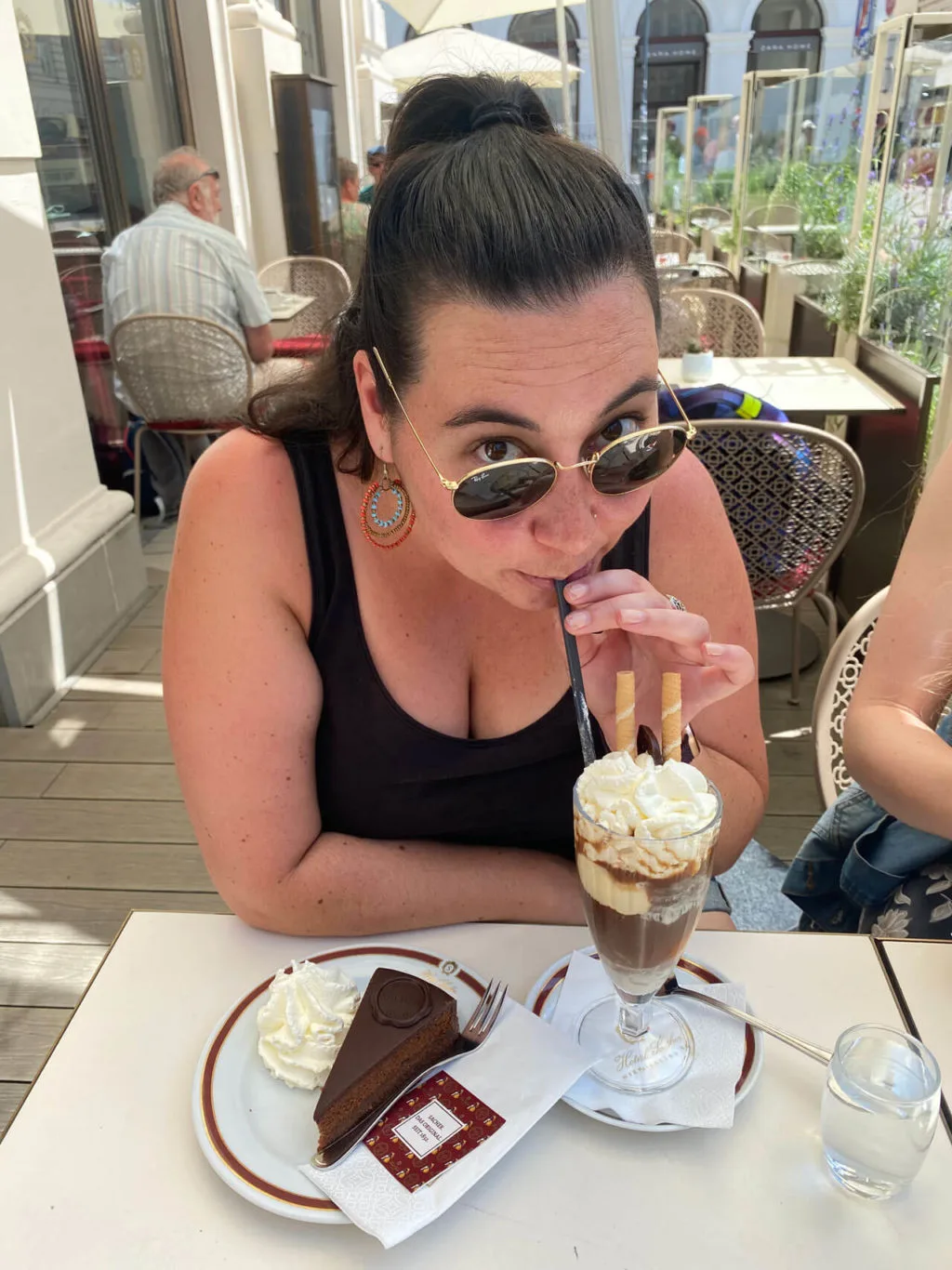
Austria Budget
For those who are looking to travel to Austria on a budget you can expect to pay around €75 a day. This is if you’re staying in hostel dorm rooms, which are €25+ a night, are eating out but mostly street food or from cheaper restuarants only (approx. €5-10 per meal), which leaves you €30 or so a day for activities, special splurges or travel. Keep in mind this is tight but there is also wiggle room. If you’re willing to cook for yourself you’ll save more, couchsurf, or aren’t so much into the main tourist sites you’ll save a lot!
For those with a mid-range budget, expect to pay around €150 a day. This is a comfortable mid-range budget that allows for a mix of private rooms in hostels (€75+ per night) or hotels (€100+ per night), a mix of street food, cafes, and sit down meals (€5-25 per meal), and €50 per day for activites and transport.
For those who are looking for some luxury, plan to spend around €250 per day or more. Luxury is defined differently to everyone and Austria certainly has some amazing hotels, such as the Sacher Hotel in Vienna or Salzburg, that may well be worth the spluge for you!
How to Get to Austria
By Air
By air is the obvious choice if visiting from overseas or travelling from a distance within Europe. It’s best to fly into Vienna as it’s the largest airport and is a great place to kickstart your Austrian adventure.
By Train or Bus
If travelling from Switzerland, the south of Germany (such as Munich), or Italy, it would be ideal to take the train to Innsbruck to begin your journey. From Slovenia or Croatia, hop on a bus to Graz or Vienna.
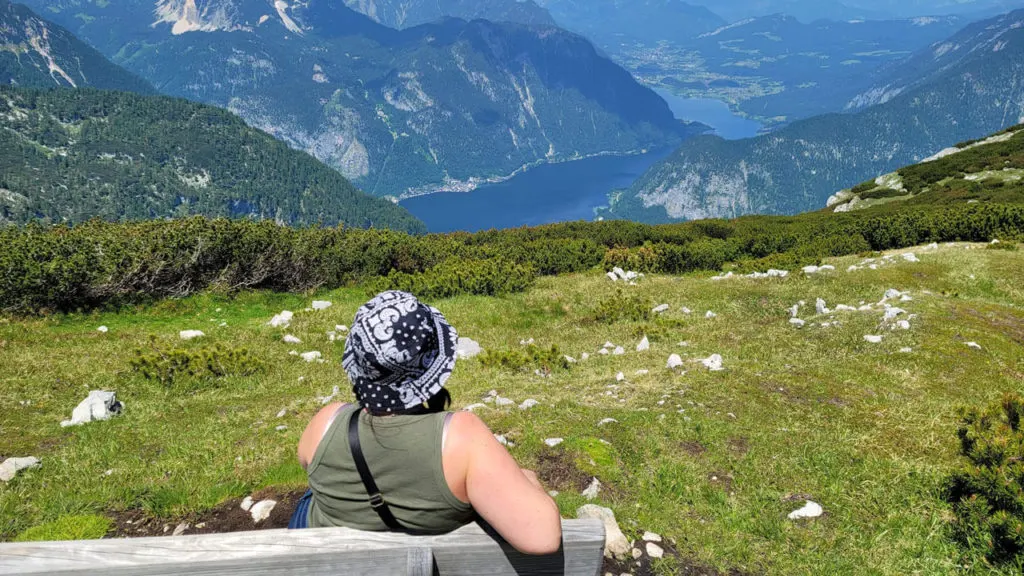
Getting Around Austria
By Train
Train is by far the best way to travel around Austria, especially with this itinerary. Austria’s national rail operator, OBB, is one of the best in Europe. It’s clean, with free wifi on board, food cars, and it’s comfortable. For intercity travel, you’ll be connected from city to city in a manner of hours, typically 1-3 hours max. Be sure to also check out Westbahn, which is a great rail operator too and offers competitive prices.
Note that if you’re travelling between Austria and surrounding countries check the other national rail operators as OBB is known for being nice but also pricey. For example, Deutsche Bahn (DB) if travelling to or from Germany.
By Car
For the majority of travellers to Austria it is not necessary to rent a car to get around because the rail network is so spectacular. That being said, if you plan on heading up into the mountains, to some off-the-beaten-track destinations, or up to alpine huts, a car may be necessary.
Before renting a car keep in mind it is quite pricey in Austria. While some drives into the mountains are absolutely stunning, they are not for the faint of heart. Some areas in the winter months do require snow tires or chains, and some roads and highways it is mandatory to have a toll sticker, so be prepared! Lastly, make it clear when renting a car if you need an automatic or not as lots of rentals are manual.
By Bus
Bus travel in Austria is most popular to the more remote regions. The only time you may need to use a bus with this itinerary is to Hallstatt. The bus and train schedules tend to work with each other well. You can find schedules on Post Bus or Flix Bus.
Within Cities
Do not stress about travelling around within the cities or places you visit. Most places are walkable or offer easy-to-use buses or streetcars if you wish to visit places that are outside of city centres. Vienna you will most likely use transport but their subway system is extremely easy to use and purchasing a ticket at machines within stations is translated in a number of languages, including English.
Travel Insurance in Austria
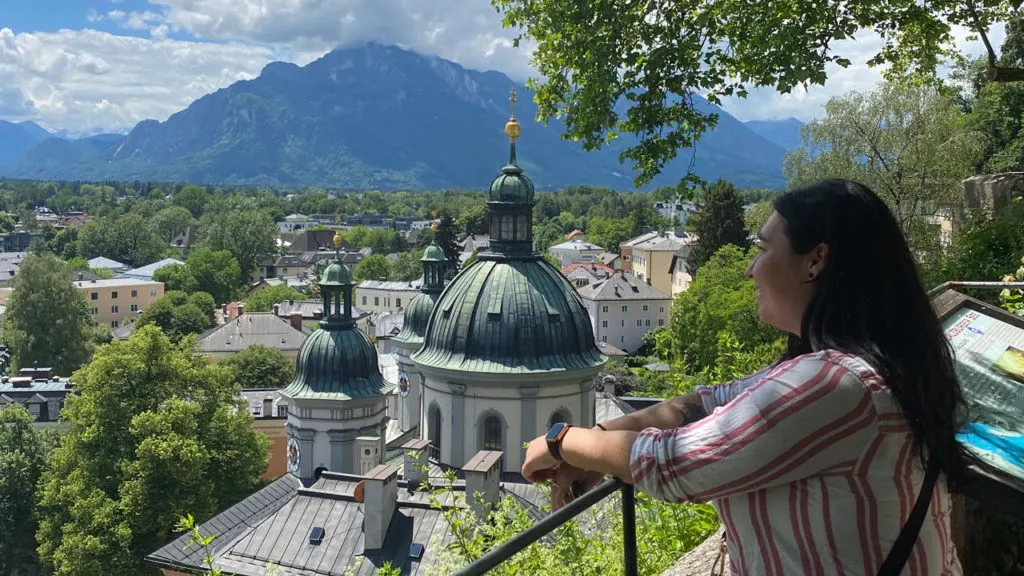
Where to Go in Austria
For the purposes of this itinerary, we’ll stick with Austria’s main cities and towns so that you can get a great overview of the country.
Vienna: An absolute must when visiting Austria, Vienna (Wien in German) is one capital city that can’t be passed up. Roam through the streets of the city centre to meander past intricately decorated buildings, stumble across towering churches, past cafes where locals take their time, and around the Hofburg Palace that is the centre of town. I could go on about Vienna forever as it is one of my personal favourite cities, but just take my word for it that a trip to Austria is not complete without a stop in Vienna!
Salzburg: Steeped in history, the birthplace of Mozart, and picturesque, Salzburg is most certainly a tourist hot spot in Austria. Don’t let the fact that this city is touristy deter you though. Salzburg is quite charming despite the crowds and is a place where you will find restaurants, cafes, and a number of viewpoints to relax, take in the scenery and slow down while surrounded by the beauty of nature and the architecture.
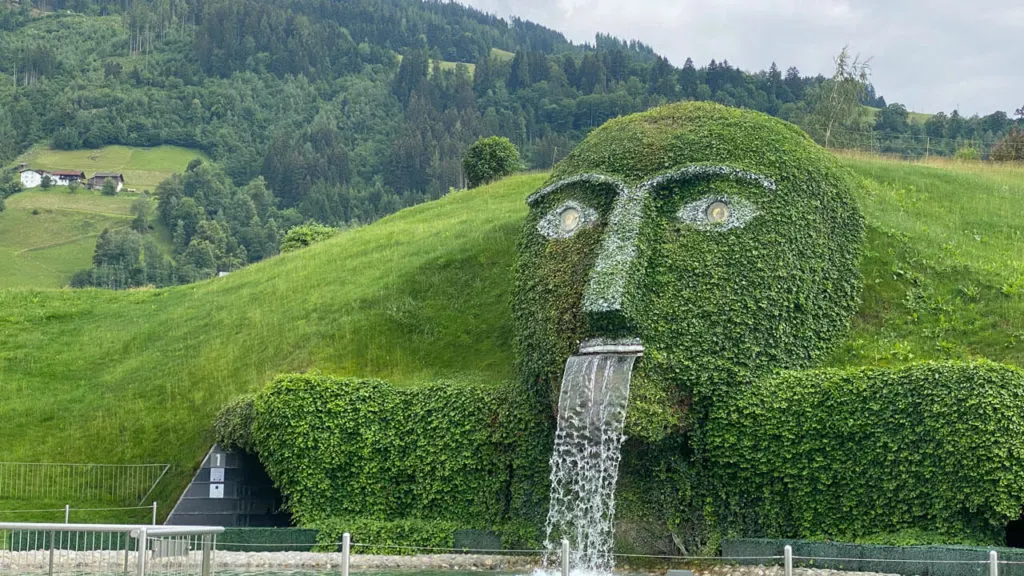
Innsbruck: Innsbruck is truly the best combination of a place for those who love the city and the outdoors. Towering over this small city is the Nordkette Mountain Range that provides ample space for hikers, mountain bikers, and climbers alike to enjoy. The best part? It’s all accessible via cable car in about 20 minutes or you can start hiking right from the edge of town. The old town is rich in history, full of beautiful buildings, and restaurants serving delicious Tyrolian dishes and drinks.
Hallstatt: A town that is well-known around the world, many will come to Austria just to witness the beauty of this small town nestled among the mountains, the Salzkammergut Mountains, that also sits along a lake. Hallstatt is Austria’s picturesque views at its best. And with mountains so close by, there’s more to do here than just roam through the town itself. Head up towards the Dachstein Mountains in a cable car and take in the incredible views from above too.
Wachau Valley: Wine lovers this is your spot. Just west of Vienna along the Danube you’ll find Wachau Valley which is dotted with towns and wineries, abbeys and castle ruins. Day trips from Vienna are common here, and while many recommend renting a car to explore this region, biking from winery to winery is a top option too.
Graz: Often overlooked due to its location in the southeast of the country, Graz is a great stop if coming from the south, such as Slovenia or Croatia. Graz is Austria’s second-largest city and while it holds a ton of history and well-preserved Renaissance and Baroque architecture in the old town, it’s also a lively city due to the number of universities that are in and around Graz. For the purposes of this itinerary, Graz is not included but mentioned here for those coming from the southeast of Austria.
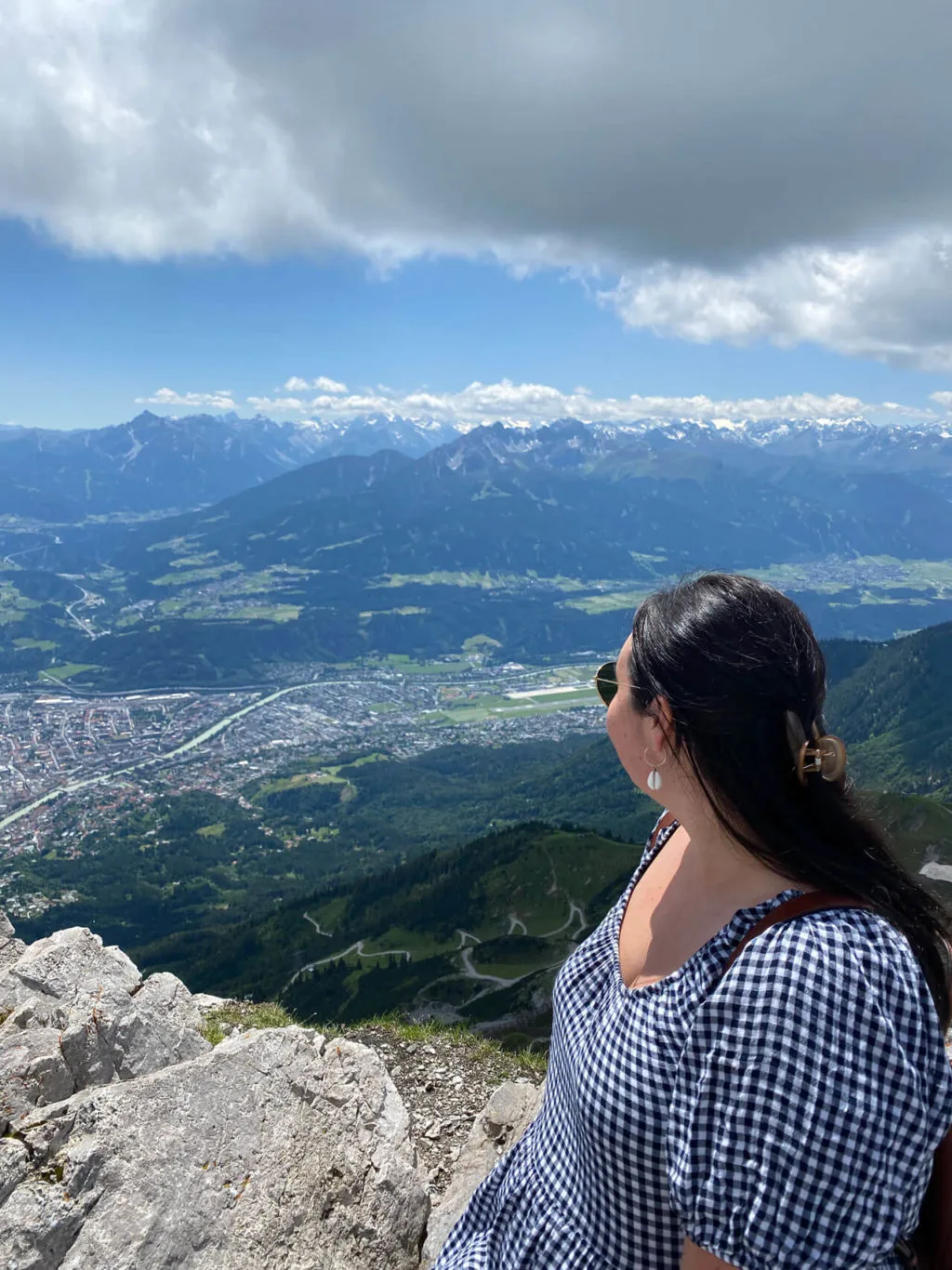
How Long to Spend in Austria?
Austria may be a small country, but that doesn’t mean that you should spend less time! 5 days in Austria I would suggest as the bare minimum. This will give you time to explore 2 cities. A week in Austria is ideal and will allow you to see 3 cities, and do a day trip or two, depending on how long to spend in each city. However, adding on a few days or a week and a half in Austria will lend you to a more leisurely pace and take you to some destinations that are less frequented.

